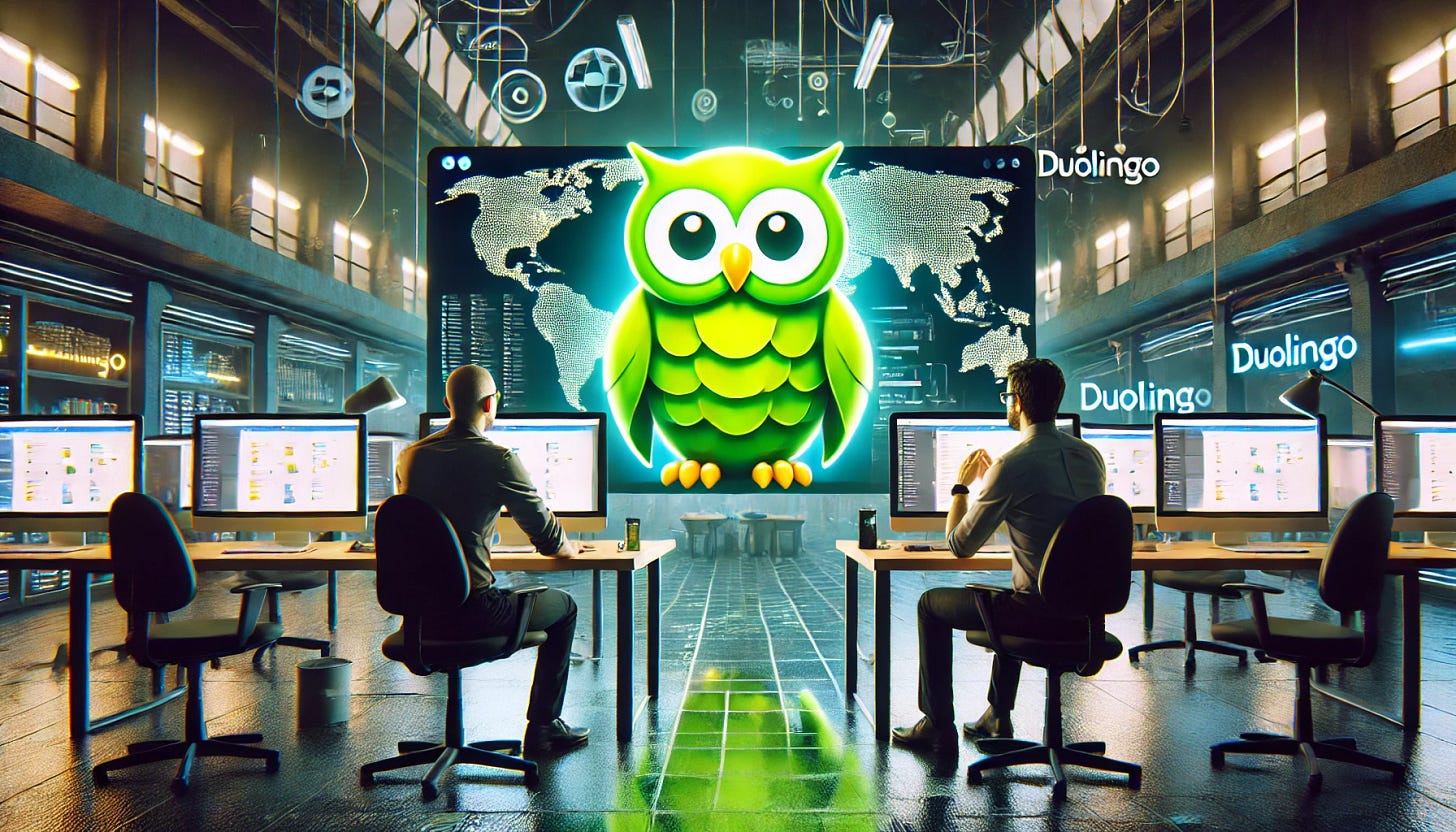Duolingo: The App That Made Language Learning Addictive and Free
Duolingo's story begins with Luis von Ahn and Severin Hacker, who co-founded the app with a shared vision of making high-quality education universally accessible.
The Founders' Backgrounds
Luis von Ahn was born and raised in Guatemala, a country with extreme economic disparity. From a young age, he was acutely aware of the challenges that many people faced, especially in terms of access to education. This awareness would later become a significant driver behind his efforts to democratize learning. After moving to the United States, von Ahn pursued higher education in computer science and developed a reputation as a pioneer in the field of crowdsourcing. His notable inventions included CAPTCHA and reCAPTCHA—tools initially designed to prevent spam, which he later adapted to digitize books. Google acquired reCAPTCHA, making von Ahn financially comfortable but still searching for his next meaningful project.
Severin Hacker, born in Switzerland, shared a similar interest in technology and the ways it could empower people. He attended Carnegie Mellon University (CMU) in Pittsburgh, where he was one of von Ahn’s graduate students. Hacker was known for his strong technical skills and passion for creating innovative solutions to real-world problems. Together, von Ahn and Hacker began exploring ideas that would allow people to access education without the barriers of cost or location.
The Aha Moment: The Vision for Free Language Learning
The idea for Duolingo took shape from von Ahn’s observation of the steep learning curve and cost involved in language education. He was inspired by the millions of people worldwide trying to learn English to improve their lives and professional opportunities. Access to language education was either costly or not available at all, especially in underdeveloped countries. This realization spurred von Ahn to think about ways to bridge this gap with technology.
During this time, von Ahn and Hacker started discussing the feasibility of building a language-learning platform that could be free for users. The "aha" moment was a unique dual-purpose model: while learning languages, users would also contribute to translating content, essentially “crowdsourcing” translations. This idea allowed users to learn for free while creating real-world value—a concept von Ahn had explored with reCAPTCHA.
Developing Duolingo
In 2009, von Ahn and Hacker began laying the foundation for what would eventually become Duolingo. They worked tirelessly in Carnegie Mellon's labs, focusing on creating a learning platform that would combine both gamification and serious educational value. Von Ahn and Hacker wanted learning to be enjoyable, accessible, and impactful.
They launched Duolingo in a closed beta in 2011, and by 2012, it became publicly available. The app quickly attracted attention for its user-friendly, gamified approach to language learning. Instead of long, traditional lessons, Duolingo offered bite-sized exercises that felt more like a game, rewarding users with "lingots" (in-app currency) for completing tasks. This design allowed users to make steady progress without feeling overwhelmed, a significant departure from other language-learning methods.
Key Milestones and Growth
After its public release, Duolingo’s growth was rapid. In 2012, Apple named it the iPhone App of the Year—an impressive accomplishment for a new app in a highly competitive field. As word spread, Duolingo’s user base grew exponentially. The app’s freemium model allowed anyone to learn a language without a subscription, making it particularly popular among students and users from emerging markets.
By 2014, Duolingo had introduced its “Duolingo for Schools” initiative, providing teachers with tools to help monitor their students’ progress. This addition positioned Duolingo not only as a consumer app but as an educational tool used in classrooms worldwide. At the same time, Duolingo expanded its language offerings, eventually including courses for non-English speakers and regional languages, further broadening its appeal.
The Monetization Strategy
In 2017, Duolingo launched its subscription-based plan, Duolingo Plus. For a monthly fee, users could enjoy an ad-free experience and offline access to lessons. The decision to introduce a premium version was carefully considered to ensure that it didn’t compromise the app's mission to remain free and accessible for everyone. Meanwhile, Duolingo continued to generate revenue from ads shown to free users.
Becoming a Household Name and Going Public
Duolingo's approach to accessible, gamified language learning turned it into one of the most downloaded educational apps in the world. By 2020, as millions of people worldwide found themselves at home due to the COVID-19 pandemic, interest in online learning surged, leading to a substantial increase in Duolingo’s user base.
In 2021, Duolingo achieved another major milestone: it went public on the NASDAQ. This IPO marked a turning point, providing the company with more resources to invest in content, technology, and the development of new learning tools. The IPO further validated Duolingo’s model of democratizing education through technology, as it had successfully built a sustainable, socially impactful business.
Recent Developments and Future Goals
Today, Duolingo is much more than a language-learning app. The company has continued to expand into other educational domains, including literacy with the launch of its “Duolingo ABC” app. Additionally, Duolingo has embraced artificial intelligence to enhance its adaptive learning capabilities, allowing it to cater to individual users’ progress and learning styles.
Throughout its journey, Duolingo has stayed true to its founding mission: making education accessible, enjoyable, and free. Von Ahn and Hacker’s vision of combining gamification, crowdsourcing, and accessibility has proven to be revolutionary, positioning Duolingo as a global leader in the field of online education.
Join us: ➡️ Instagram | Telegram | X ⬅️



